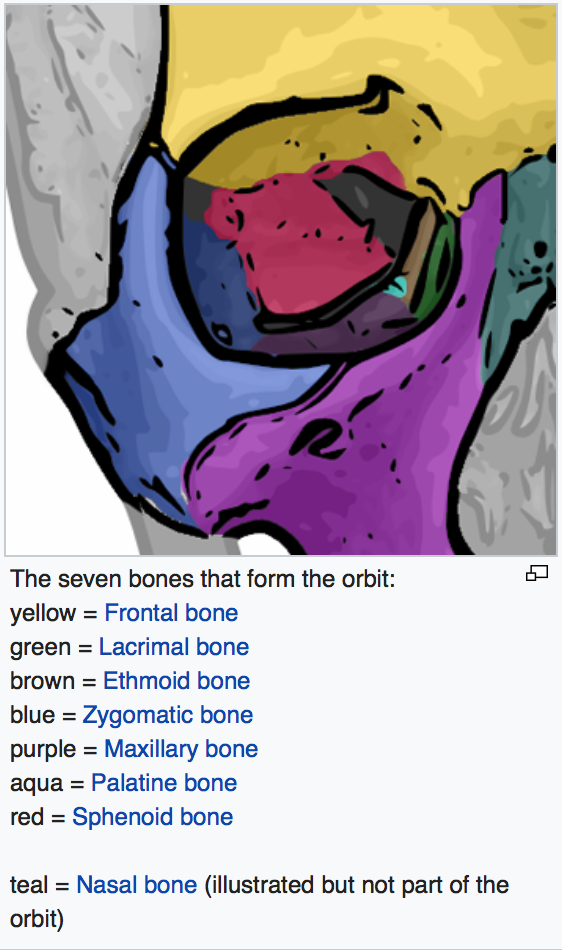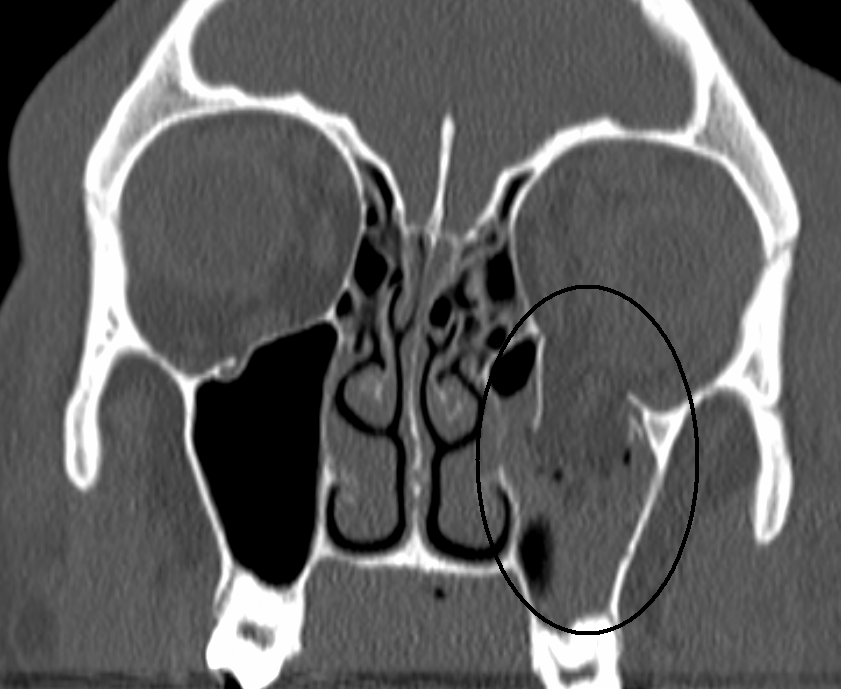Joel Embiid, 7'0" star of the Philadelphia 76ers, was back in the lineup tonight after missing a few weeks because of an orbital fracture he sustained in a March 28 game against the New York Knicks during a collision with rookie teammate Markelle Fultz.
The bones of the orbit (eye socket). Image courtesy of wikipedia.
The orbit, or "eye socket" in lay terms, is made up of seven different bones, and can be thought of as a room with a floor, walls, and a ceiling. Aside from the obvious opening at the front through which the eye is able to see, there are several other much smaller openings through which nerves and blood vessels pass.
In facial trauma, the bones that make up the orbit, like any other bones in the body, can break. Fractures of the orbit most commonly affect two sites: the thin, inner bones that make up the wall between the eye and the nose, or the bones of the "floor" of the orbit. Fractures of the thicker bones that make up the "rim" at the front of the orbit are more rare, as they require much more force.
Symptoms of orbital fracture may include pain around the eye, displacement (often backward or downward) of the eye itself, double vision, bruising around the eye, inability to move the eye in different directions, or numbness of the cheek. The diagnosis is confirmed by a computed tomogram (CT scan) of the maxillofacial area.
The oval shows a "blowout" type fracture of the floor of the left orbit.
For patients who have sustained a fracture of the orbit, an ophthalmologist is typically consulted to evaluate the eye, rule out serious vision- or even eye-threatening injuries, and to check for signs of muscle entrapment. The eye has six different muscles that attach to it, allowing it to move in all different directions, and sometimes, when the bones around the eye break, these muscles will get snagged in the fractured bone. When this happens, it usually causes double vision, inability to look up or down, and nausea, vomiting, or low heart rate when the patient tries to look up or down. Muscle entrapment is more common in children, because their bones, more flexible than adults', often break and then "snap back," trapping muscle.
The majority of orbital fractures do not require surgery to fix. Conservative treatments often include ice packs, antibiotics, nasal decongestants, and caution to avoid blowing the nose for a few weeks, as this can cause air to get into the eye socket through the fracture, potentially putting undue pressure on the eye and its supporting structures and causing permanent vision loss.
Reasons for a patient to have surgery to fix their orbital fracture include things like persistent double vision, an entrapped muscle, significant enophthalmos (an eye that is "sunken back" into the orbit), or a cosmetically unacceptable appearance. Surgeons typically wait for 1-2 weeks for swelling to subside before performing surgery. However, in cases of muscle entrapment, surgery is much more urgent, as the trapped muscle can lose its blood flow and become irreparably damaged if not promptly freed from the fracture.
Three days following his injury, Embiid's orbital fracture was surgically repaired by Dr. Jurij Bilyk (oculoplastic surgeon) and Dr. Howard Krein (reconstructive head and neck surgeon). No public mention has been made as to whether Embiid suffered from double vision or whether this factored into the decision to have surgery.
Embiid looked sharp in his return to action against the Heat, scoring 23 points and grabbing 7 rebounds in 30 minutes of action, all while wearing a protective mask.



